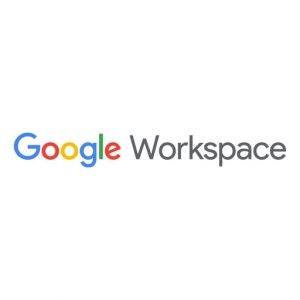Ensuring Hybrid Work Actually Works

For most of us and our businesses, hybrid work from home jobs are here to stay. In reality, it has almost always been with us. Salespersons, field technicians, and other out-of-office customer-facing roles have been a part of many businesses for decades. The mix, however, of who works outside the office has changed. And while many businesses are still working to figure out how many in-office work days are necessary each week, the underlying assumption is that hybrid work models will remain.
The challenge now is to ensure your model for hybrid work actually works for your business. When remote work was the exception, the solutions could be one-offs, or more complicated, because the impact on users was limited. The extra effort to connect to the office was acceptable. Remote work is now part of the norm, whether in a hybrid model or full-time. Connecting is now critical — technically and in terms of communication, collaboration, and culture.
Here are 5 Ways to Help Ensure Hybrid Work Actually Works
1 Simplify Access and Accessibility
Ensure your team can connect and work easily. Each added layer, such as VPNs, adds a layer of complexity and creates another opportunity for something to go wrong. Complexity also impedes performance.
Moving services — applications, files, data — into a central cloud service reduces the need for complex connections from remote users to in-house networks and servers. Microsoft 365 or Google Workspace, for example, can easily replace traditional file servers. Using a virtual desktop infrastructure (VDI) service with remote desktops simplifies access and accessibility to servers and line-of-business applications that do not yet run in the cloud.
2 Create a Single User Experience
If the user experience is different in-office and remotely, team members on a hybrid schedule must effectively navigate two different systems to connect and work. The result is often confusion. File locations and access to printers and scanners become confusing. Configuring oneDrive or Google Drive desktop applications is challenging if you want them to work on and off your office network.
Creating a single user experience reduces the confusion and eliminates potential roadblocks to productivity.
One of the easiest ways to create a single user experience is to use (VDI) and remote desktops. Rather than having users work “locally” in the office and “remotely” elsewhere, the VDI environment provides remote desktops usable to everybody regardless of location. All users connect to the service and work within a secure network.
As an added benefit, VDI narrows the scope of your security envelope. VDI reduces the need to manage end user devices, particularly if you allow Bring Your Own Devices (BYOD).
3 Enable Collaboration
The flow of information is different when we work remotely versus together. And while many are more productive working remotely, effective collaboration takes effort.
On average small businesses use only 10% to 15% of the features and capabilities of Microsoft 365 and Google Workspace. There is a high cost to low adoption.
To foster collaboration, your team must be comfortable using the tools that enable the sharing, communications, and relationships. On-going education of capabilities helps team members learn and use collaboration features. Reviewing and updating workflows and processes can improve collaboration within day-to-day activities.
4 Manage Your Managers
Managing people and leading teams is a skill. Many “doers” struggle when they become managers, given the complexities of coaching, mentoring, managing expectations, and dispute resolution across diverse groups of individuals. Managing teams with remote members is even more challenging. Team dynamics will differ, perception biases related to visibility will exist, and managing will need to be against results and expectations rather than visible activity.
Team leaders and managers need education, training, guidance, and mentoring to succeed. And this need is greater with hybrid and remote teams. Peruse the Ask a Manager blog archives if you want real life examples of unskilled, and outright bad, managers who can damage your business.
Spend some time, and yes, money, to develop management and leadership skills for those responsible for supervising others. Include guidance and support for issues unique to remote staff and hybrid and remote teams.
5 Include People Intentionally
Remote work does allow team members to focus on their tasks and manage their time. Meetings still happen and team members can use their commute time for other things.
In-person work still has benefits. Unstructured interactions build relationships and connections that enable ideas and innovations to take hold. Granted, “water cooler” chats can be gossipy or give naysayers a channel. These conversations also enable many to float and test ideas outside of formal meetings. There is a perceived formality when you ask somebody to meet via video, even if it is to just bounce and discuss ideas. The acts of requesting, scheduling, and joining create a structure that differs from catching somebody at their desk, in the hall, or walking back from lunch.
The solution is to create opportunities for casual communications and to set the expectation that they should occur. To do so, your team members need opportunities to interact not only on work, but work-tangential topics, as a means to build relationships and trust.
For your remote/hybrid workers, inclusion is key.
- As you prepare for meetings, let remote participants know in advance that you will be seeking their input on various topics. Set the expectation for participation without an element of surprise.
- Create the habit of asking, “Who else should we ask?” when having unstructured discussions. Include them in real-time via chat or video, or message them for ideas or a time to chat.
- Actively include remote workers in company events. Team pizza lunch on Thursday? Move it to a conference room, invite remote team members, and send remote participants lunch (or a credit to order their favorite).
- Plan company events so remote team members can participate. Activities, like providing the ingredients and preparing a fancy meal guided by a chef, allow people to share a common experience in a group setting, even though participants are not physically together.
Next Step: Cumulus Global Can Help Your Business Succeed in a Hybrid Work Environment
Making sure that hybrid work actually works for your business requires intent, planning and action. Even small initiatives and steps to support remote staff and teams, and to foster communication, trust, and collaboration, can have a big impact on your business.
Cumulus Global can help you with plan and deploy technologies and servers that enable and support effective remote workers and teams. With best-in-class remote desktop/VDI services, expert support for both Microsoft 365 and Google Workspace, and affordable Managed Cloud Services, we will help your business thrive and grow.
Click here to schedule a call with a Cloud Advisor or send us an email. There is no cost and no obligation.
About the Author
 Bill is a Senior Cloud Advisor responsible for helping small and midsize organizations with cloud forward solutions that meet their business needs, priorities, and budgets. Bill works with executives, leaders, and team members to understand workflows, identify strategic goals and tactical requirements, and design solutions and implementation phases. Having helped over 200 organizations successfully adopt cloud solutions, his expertise and working style ensure a comfortable experience effective change management.
Bill is a Senior Cloud Advisor responsible for helping small and midsize organizations with cloud forward solutions that meet their business needs, priorities, and budgets. Bill works with executives, leaders, and team members to understand workflows, identify strategic goals and tactical requirements, and design solutions and implementation phases. Having helped over 200 organizations successfully adopt cloud solutions, his expertise and working style ensure a comfortable experience effective change management.

 As small business owners and leaders, you carry the responsibility for the direction and success of your business. And while Cumulus Global provide managed cloud services that help you thrive and grow, we understand your responsibilities are broader than just IT. As a way to share some leadership thoughts, here is a curated list of blog posts from trusted experts that we hope will inform and inspire.
As small business owners and leaders, you carry the responsibility for the direction and success of your business. And while Cumulus Global provide managed cloud services that help you thrive and grow, we understand your responsibilities are broader than just IT. As a way to share some leadership thoughts, here is a curated list of blog posts from trusted experts that we hope will inform and inspire. In our
In our 
 Allen Falcon is the co-founder and CEO of Cumulus Global. Allen co-founded Cumulus Global in 2006 to offer small businesses enterprise-grade email security and compliance using emerging cloud solutions. He has led the company’s growth into a managed cloud service provider with over 1,000 customers throughout North America. Starting his first business at age 12, Allen is a serial entrepreneur. He has launched strategic IT consulting, software, and service companies. An advocate for small and midsize businesses, Allen served on the board of the former Smaller Business Association of New England, local economic development committees, and industry advisory boards.
Allen Falcon is the co-founder and CEO of Cumulus Global. Allen co-founded Cumulus Global in 2006 to offer small businesses enterprise-grade email security and compliance using emerging cloud solutions. He has led the company’s growth into a managed cloud service provider with over 1,000 customers throughout North America. Starting his first business at age 12, Allen is a serial entrepreneur. He has launched strategic IT consulting, software, and service companies. An advocate for small and midsize businesses, Allen served on the board of the former Smaller Business Association of New England, local economic development committees, and industry advisory boards.
 Christopher Caldwell is the COO and a co-founder of Cumulus Global. Chris is a successful Information Services executive with 40 years experience in information services operations, application development, management, and leadership. His expertise includes corporate information technology and service management; program and project management; strategic and project-specific business requirements analysis; system requirements analysis and specification; system, application, and database design; software engineering and development, data center management, network and systems administration, network and system security, and end-user technical support.
Christopher Caldwell is the COO and a co-founder of Cumulus Global. Chris is a successful Information Services executive with 40 years experience in information services operations, application development, management, and leadership. His expertise includes corporate information technology and service management; program and project management; strategic and project-specific business requirements analysis; system requirements analysis and specification; system, application, and database design; software engineering and development, data center management, network and systems administration, network and system security, and end-user technical support. If you are a sole practitioner, a solopreneur, or the owner of smaller businesses, you face unique technology challenges. You, and businesses like yours, are uniquely dependent on your technology. Your computer and phone are critical tools without which your business can screech to a halt. Avoiding IT problems is critical. And yet, you do not have time to be the IT guru. You may not have access to, or the budget for, traditional IT services.
If you are a sole practitioner, a solopreneur, or the owner of smaller businesses, you face unique technology challenges. You, and businesses like yours, are uniquely dependent on your technology. Your computer and phone are critical tools without which your business can screech to a halt. Avoiding IT problems is critical. And yet, you do not have time to be the IT guru. You may not have access to, or the budget for, traditional IT services. We have all seen and heard the warnings about the ever increasing number of cyber attacks against small business. More than crypto-ware, small and midsize businesses are targets of other forms for ransomware, impersonation, crypto-mining, and business email compromise attacks. The threats are real, as are the operational and financial risks to your business. Multi-Factor Authentication, or MFA, is an effective, “no cost” solution.
We have all seen and heard the warnings about the ever increasing number of cyber attacks against small business. More than crypto-ware, small and midsize businesses are targets of other forms for ransomware, impersonation, crypto-mining, and business email compromise attacks. The threats are real, as are the operational and financial risks to your business. Multi-Factor Authentication, or MFA, is an effective, “no cost” solution.
